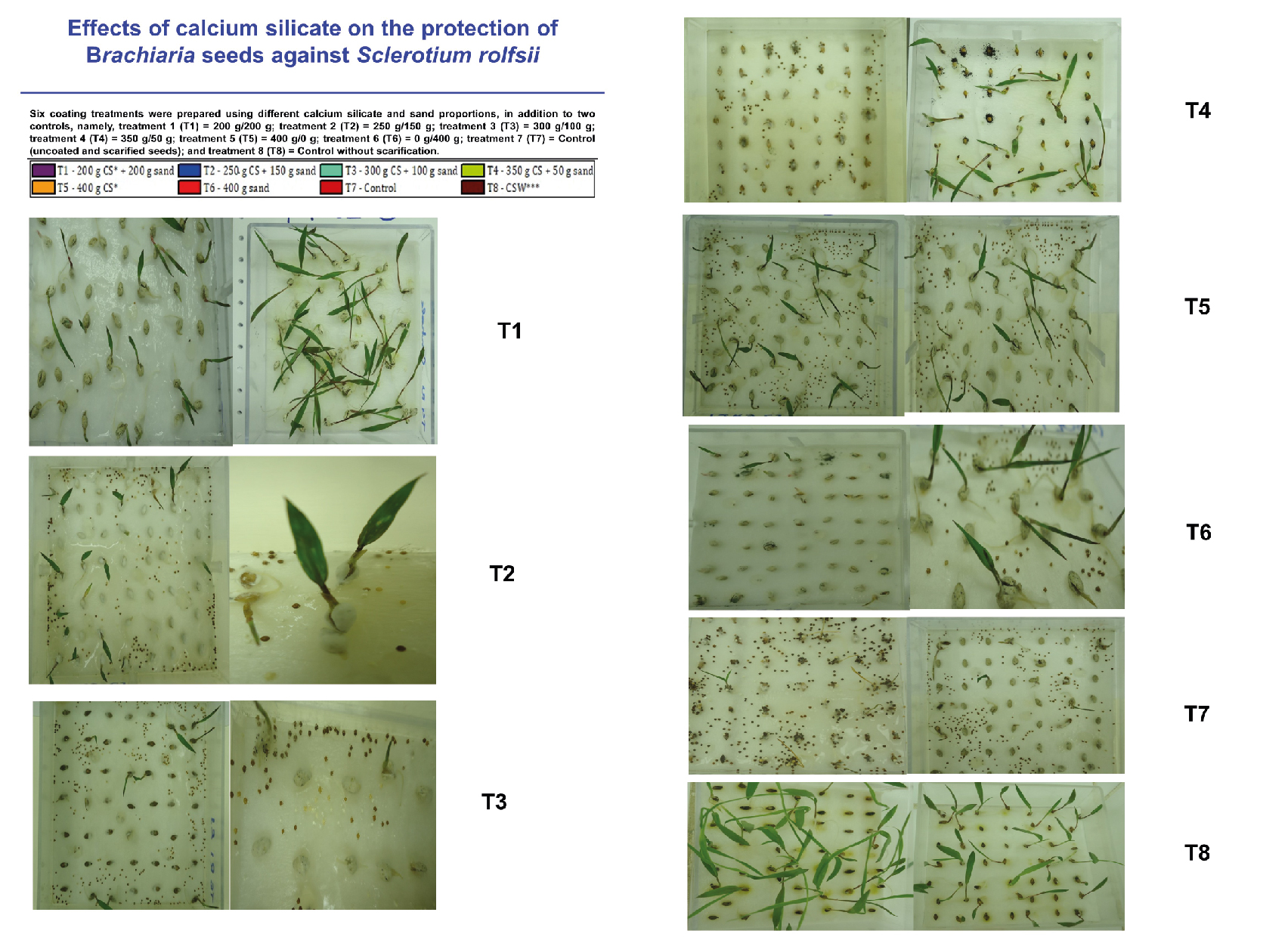Effects of calcium silicate on the protection of Brachiaria seeds against Sclerotium rolfsii
Protection of Brachiaria seeds against Sclerotium rolfsii Sacc.
Palabras clave:
Brachiaria brizanta, amortiguación, recubrimiento de semillas, silicioResumen

Sclerotium rolfsii a fungus widespread in tropical and subtropical regions, is a phytopathogen that affects a large number of cultivated and wild plants"”e.g. Brachiaria species"”, causing damping-off. Current disease control strategies include chemical treatment of seeds, genetic resistance and crop rotation. Compared to synthetic agrochemicals, silicon may act as an element inducing plant resistance. This study examined the efficiency of calcium silicate in the coating of Brachiaria seeds on the incidence of the disease during plant germination and establishment. The experiment consisted of six Brachiaria brizantha seed-coating treatments involving different proportions of calcium silicate and sand, plus two controls. The fungus was inoculated at three different times in relation to seed sowing, namely, inoculation along with sowing (IN0); inoculation 10 days after sowing (IN10); inoculation 20 days after sowing (IN20); and no inoculation (control). Radicle emergence, germination, abnormal seedlings, damped-off seedlings and dead seeds were evaluated. There was an increase in the germination rate of B. brizantha cv. MG5 seeds coated with calcium silicate, which showed a protective effect against the incidence of S. rolfsii, directly reflecting in a lower of percentage of damping-off.
Highlights
- According to the results obtained, it is convenient to use seeds coated with calcium silicate increases and inoculated with rolfsii.
- Seed coating with calcium silicate decreased damping-off in plants.
- Silicon can contribute to increase crop yield and disease resistance, given the benefits demonstrated in the current experiment.

Descargas
Publicado
Número
Sección
Licencia
Aquellos autores/as que tengan publicaciones con esta revista, aceptan las Políticas Editoriales.



